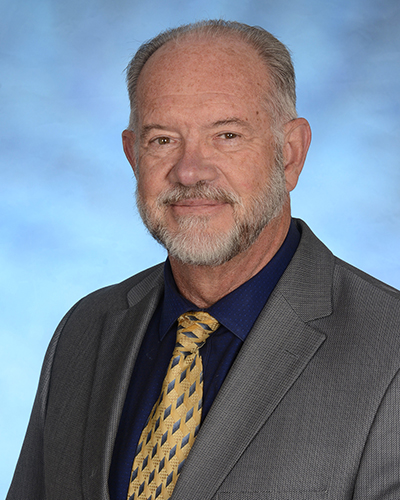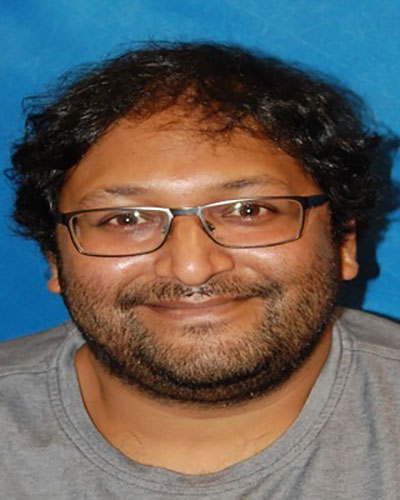
Gary Fiskum, PhD
Faculty Profile
Overview
The Fiskum lab currently consists of three faculty members, one postdoctoral fellow, a lab manager, a lab helper, one summer medical student, one undergraduate student, three research specialists, and one administrative assistant. Several lab members have been part of the team for over 10 yr. The primary goal of the lab is to improve the understanding of the pathophysiology of both ischemic and traumatic brain injury and relationships between injury to the brain and multiple organ failure.
Our approach to this goal utilizes pre-clinical animal models and clinical biomarkers, such as blood cell transcriptomics, bioenergetics, and clinical outcomes in patients with severe brain injury. Our mission is to develop clinically feasible and safe neuroprotective interventions for acute brain injury.
Our lab demonstrated that animals exposed to unnecessary hyperoxia following brain ischemia are just as damaging as hypoxia led to a fundamental change in the Advanced Cardiac Life Support Resuscitation guidelines in 2010, a change that has likely improved the survival and quality of life for many thousands of cardiac arrest patients. Many of our greater than 200 peer-reviewed research articles describe the complex interactions between oxidative stress and mitochondrial bioenergetics and the development of therapeutic interventions that target these interactions.
For example, we were the first to demonstrate that pharmacologic activation of the Nrf2 pathway of antioxidant gene expression protects mitochondria from stress-induced dysfunction. We also identified sexually dimorphic differences in mitochondrial antioxidant molecules and changes in morphology that may be responsible for the relative resistance of female rat pups to brain injury caused by hypoxia.
Together with our collaborators at the University of Maryland School of Engineering, we developed a unique model of brain injury caused by explosions targeting military vehicles. Most importantly, modifications of the chassis design reduce brain injury and mortality.
Many brain-injured warfighters are transferred by air within a few days post-injury from combat zones to military medical centers. Using our highly innovative animal models, we demonstrated that the hypobaria experienced during these transfers actually worsens brain injury alone and in combination with polytrauma.
The lab is currently funded by four grants from either the US Army or US Air Force. We particularly value our collaboration with many other investigators at the University of Maryland Schools of Medicine, Engineering, and Nursing, the Air Force Research Laboratories, and the Walter Reed Army Institute of Research.
Meet the Team

Gary Fiskum, PhD
Principal Investigator/ Professor Emeritus
BA: Zoology, UCLA Los Angeles, USA
PhD: Biochemistry, St. Louis University, St. Louis, USA
Postdoctoral Fellowship: Johns Hopkins University School of Medicine, Baltimore, USA
Interests: Mitochondrial bioenergetics, Apoptosis, Traumatic brain injury

Apurva Borcar, PhD
Research Associate
PhD: Louisiana State University, Baton Rouge, LA
BS: Tulane University, New Orleans, LA
Interests: Cell and molecular biology, bioenergetics, mitochondrial physiology, gene expression, oxidative stress

Molly Jo Goodfellow, PhD
Postdoctoral Fellow
PhD: The Ohio State University, Columbus, USA
MA: The Ohio State University, Columbus, USA
BA: University of Minnesota-Morris, USA
Interests: Pharmacologic neuroprotection, neuroimmune interactions with cognitive function, animal behavior, danger-associated molecular patterns (DAMPs) and oxidative stress, mechanisms of drug-induced brain injury

Pratistha Tamrakar, PhD
Postdoctoral Fellow
PhD: University of Louisiana at Monroe, Monroe, USA
Postdoctoral Fellowship: Johns Hopkins University, Baltimore, USA
Interests: Brain injury after ischemia reperfusion, mitochondrial dysfunction, oxidative stress, neuro inflammation

Denise Brown
Business Services Specialist
Projects
Exacerbation of Traumatic Brain Injury by Psychological Stress, Hypobaria and Homocysteinemia
The major goal of this project is to determine how stress and aeromedical evacuation affects neurologic outcomes following traumatic brain injury.
Optimal Oxygenation and Gene Expression During Critical Care after Cardiac of cardiac arrest.
This project tests for neuroprotection following cardiac arrest, using the optimal level of supplemental oxygen and for agents that increase the expression of antioxidant and anti-inflammatory genes.
MRI and Neurophysiologic Measurements during Exposure to Hypobaria after Experimental TBI
The major goal of this project is to determine the pathophysiology of brain injury exacerbated by exposure to aeromedical evacuation-relevant Hypobaria.
Characterization of the Effects of Aeromedical Evacuation (hypobaria and/or hypoxia) on the Downstream Sequelae of Traumatic injury”
Effects of hypobaria on mortality and morbidity using several animal models including burn, blast-induced TBI, and polytrauma.
Gene Expression in Blood, Lung, and Heart Following Exposure of Rats to Hypobaria
Analysis of changes in gene expression following exposure to different levels and durations of hypobaria and hyperoxia.
Effects of Hypobaria on Brain Injury and Mortality Following Head Trauma Combined with Hemorrhagic Shock
This project tests the hypothesis that exposure to air evacuation-relevant hypobaria worsens mortality and neurologic outcome following an animal model of polytrauma consisting of impact traumatic brain injury plus hemorrhagic shock.
Publications
Please see Dr. Fiskum's faculty profile for a complete list of his publications.
You can also see his publications on PubMed.
Contact
Office: 410-706-4711
Lab: 410-706-2990
Email: gfiskum@som.umaryland.edu
